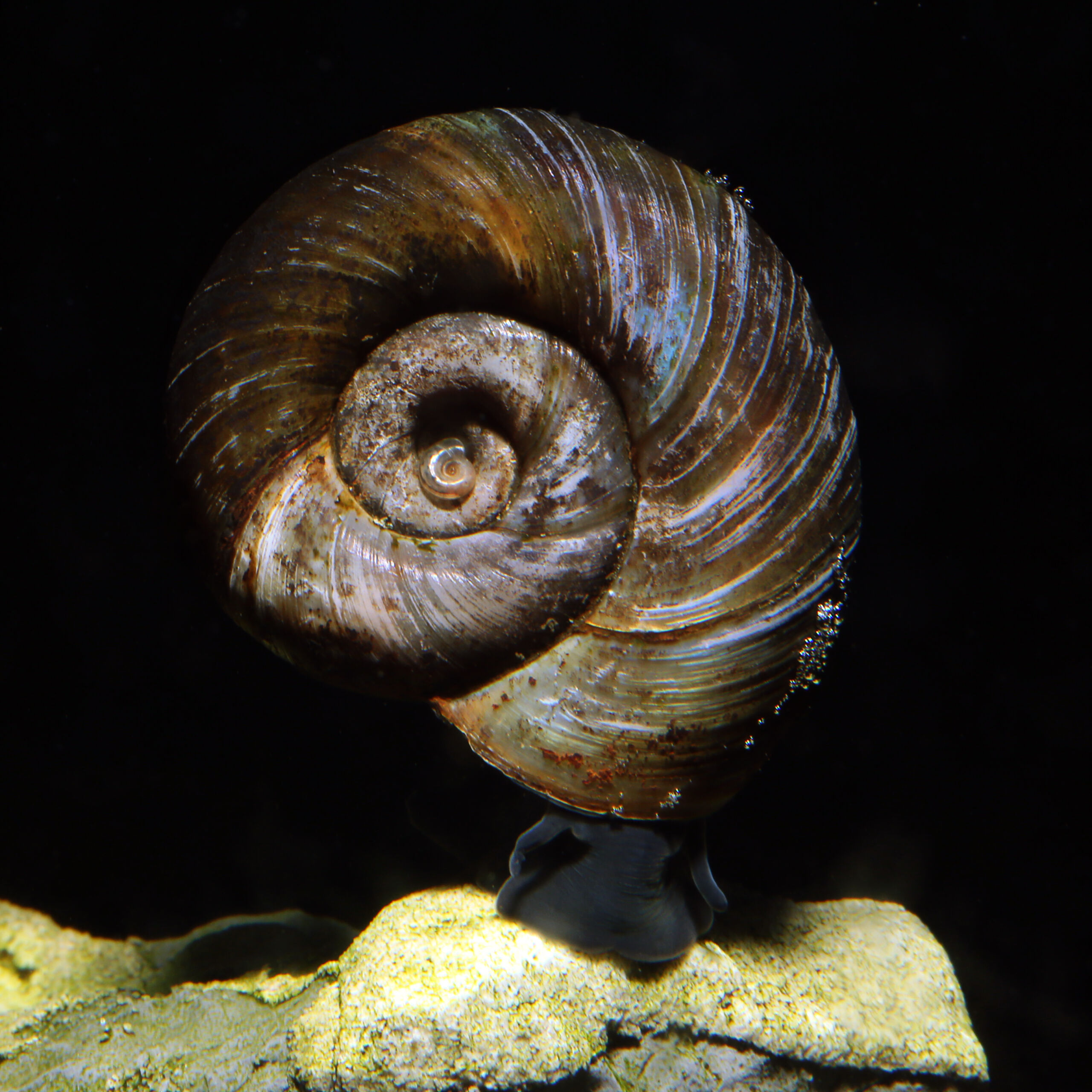Great Ramshorn
Planorbarius corneus
The Great Ramshorn is a valuable addition to both the aquarium and the garden pond.
- robust and easy to maintain
- also suitable for the garden pond
- acts as a “health police”
1 in stock
 Delivery in a few working days
Delivery in a few working days
 Free shipping from €60 across Austria
Free shipping from €60 across Austria





Important data
Product description & details
The Great Ramshorn, Planorbarius corneus, is a freshwater snail native to Europe that belongs to the order of pulmonary snails. The eponymous ramshorn-shaped and dark brown shell of the Great Ramshorn Snail can reach a diameter of up to 4.5 cm. The snail’s foot is usually dark brown to black, but there are also albino individuals with a red foot.
Care in the aquarium
The Great Ramshorn is very simple and uncomplicated to care for. In contrast to its slightly smaller relative from warm Florida (Planorbella duryi), the Great Ramshorn is hardy and therefore suitable not only for keeping in cooler aquariums, but also in garden ponds. Overwintering is possible in ponds that are at least 80cm deep. In nature and also in the aquarium or pond, the Ramshorn Snail fulfills an extremely useful and necessary role, namely that of the “health police”. By feeding on dead plant debris, carrion and leftover food, it prevents sediment from forming or pollutants from being dissolved in the water. Algae are also high on the Great Ramshorn’s diet. As with most species of snails, medium to hard water is ideal, as the shell can be damaged if the water is too soft. This absolutely peaceful snail can easily be socialized with aquarium and pond animals that do not prey on it.
Feeding
As a classic recycler of leftovers, the Great Ramshorn feeds on biofilm and algae growth as well as detritus (dead plant material, carrion, leftover food). It can be fed a wide variety of commercial (snail) food, green fodder and leaves, but can usually find enough food in a well-established aquarium or pond with other animals. Especially in aquariums with rather soft water, we recommend giving food containing minerals to prevent damage to the housing.
Sexual characteristics and breeding
The reproduction of the Great Ramshorn takes place without any human support. The animals are hermaphrodites; each individual has both male and female sexual organs. The eggs are attached to the glass panels, plants or other furnishings in round gelatinous egg packets, from which they can be removed relatively easily, if offspring is undesired. When the Ramshorn Snail is introduced into new aquariums for the first time, the population can initially increase significantly due to the high food supply – for example due to the algae films or bacterial lawns that usually appear. However, over time and with sparing feeding, the population automatically settles down to an optimal level for the respective aquarium.





